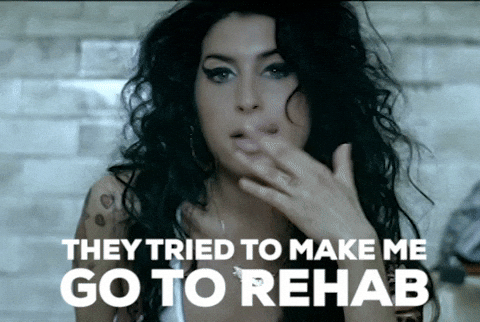Is your old content hurting your brand?
- Brenna Watson-Paul
- Aug 15
- 5 min read
There’s always a nagging pressure to write, produce, and feed your website. And for good reason: the internet rewards it, and so does your audience.
This article is for anyone involved in content planning (whether facilitating or approving) who’s wondering:
Should the team spend all their energy creating fresh, high-intent assets?
Would some of that time be better spent breathing new life into old content?
As always, the answer comes down to the ROI of your team’s time. Let’s check in for some much needed content auditing insights.
We say 'content' and it applies to anything on your website (case studies, blogs, bios, service pages, insights) even your social media. |
Welcome to content rehab

Your library of digital content isn't a static brand asset. It's compounding, in both directions. Strong, relevant content builds trust, authority, and visibility. But stale content? It quietly chips away at all three. Because in the era of AI: bad content isn't just ignored. It's summarised.
Search engines (and now AI Overviews) are surfacing answers across the entire web. Including that 2018 blog you haven't looked at since launch. If that content is inaccurate, off-brand, or no longer aligned with your business? That's what the world is seeing.
Yes, your content has a best before date
Your content library doesn't just need to exist. It needs to work.
Old blogs act like a mirror. They show what landed, what missed, and what your audience used to care about. The risks of stale content include:
reduced relevance where outdated info lowers your chances of ranking for current queries
lost authority when your site feels neglected, and
bounce risk where users landing on irrelevant pages won't stick around.
Caution! Don't blindly delete old posts, some quiet achievers might still punch above their weight. That’s where a content audit comes in handy.
Red flags it’s time for an audit
Traffic drops. Use Google Analytics or Search Console to spot high-traffic pages that have declined over the last 6–12 months. Prioritise refreshing these pages (more on this later).
Conversion performance. Was this blog once a lead magnet? Still ranking, but no longer converting? Optimise for UX and conversion, not just SEO.
Broken links and outdated references. If your piece still says, "Top Insights for 2022," you've already lost the reader.
Regular content audits are a game changer
Brands that prune or optimise outdated content often see sitewide lifts. Semrush data shows businesses that refresh their content see a 53% increase in engagement.
The true value of a content audit lies in:
Protecting your brand in the AI era. Old, inaccurate content could be fuelling misleading AI-generated summaries. AI Overviews pull from a mix of sources, and recency, accuracy and clarity give you a better shot at being surfaced. Brands that prune or optimise outdated content often see sitewide lifts.
Leveraging existing work, there’s great (and quicker) benefits from refreshing strong foundations than start from scratch.
Boosting SEO. Updated content signals relevance and authority. Age isn’t a ranking factor. But freshness is – especially for fast-moving topics.
Meeting user needs. Evergreen content only works if it's still accurate, helpful, and discoverable.
Your best blog and your oldest case study should both feel equally on-brand.
These gains vanish if your website is bloated with irrelevant, inaccurate, or forgotten material.
Three checks for your next content audit

Think of content rehab as digital hygiene:
If it’s underperforming, outdated and off-brand? Cut it.
If it’s solid but stale? Refresh it.
If it’s still relevant and ranking? Maintain it.
Here’s how to perform the three vital content checks:
1. Accuracy check
Start with the essentials:
Are the facts, links, and references all correct?
Year-specific titles or stats? Outdated product or pricing info?
Thin or low-value content? These hurt you more than you think, especially in AI summaries.
Pro tip: Don’t remove legacy content without checking performance. Some quiet achievers might surprise you with their engagement metrics.
2. Optimisation check
An opportunity to check in with how Google and AI are interpreting your content.
Are you accidentally cannibalising keywords with multiple similar pages?
Can you improve headings, structure, internal links, and schema?
Is the piece optimised for featured snippets or AI Overviews?
3. Brand and tone of voice check
Even high-performing content needs to reflect your current brand. Ask:
Does the tone still match your positioning?
Is the message still relevant to your audience today?
Are you delivering value in a way that’s recognisably “you”?
If it’s off-brand or out-of-step with how you show up today, it needs rewriting or retiring.
A content audit rotation you can actually stick to
Build a sustainable refresh workflow with this simple cadence:
monthly quick scans for outdated headlines or stats
quarterly reviews of your top 10–20 traffic drivers and converters,
bi-annual full site audits, and
annual archiving or redirecting of what's no longer fit for purpose.
And assign content owners. If no one's responsible for old content, no one touches it.
Content audit tools that make it manageable
Don't make this harder than it needs to be. The right tools turn a months-long slog into a strategic sprint.
For discovery and analysis:
Google Analytics 4 + Search Console (free): Your foundation for traffic and performance data
Screaming Frog (paid): Crawls your entire site to identify technical issues and content gaps
SEMrush (paid): Competitive analysis and keyword opportunity mapping
For project management:
Notion or Airtable (freemium): Build your content inventory and track refresh progress
Google Sheets (free): Sometimes the simplest solution for smaller audits
Pro tip: Start with the free tools to prove the concept. Then invest in paid platforms once they've demonstrated ROI. A basic audit can prove effective with just Google Analytics, Search Console, and a good spreadsheet. Or a partnership with a solid content agency. I, for one, love an audit!
Content aftercare
Five ways to refresh your content
Align with search intent. Know what users want and serve it. Check out the Search Patterns tool.
Use 'People Also Ask' for insight. These questions are long-tail gold. Bake these into your refresh.
Optimise for AI Overview snippets. Use lists, tables, and direct answers to rank higher and win visibility.
Tap into emerging trends, because new topics can generate fresh traffic. Use tools like Google Trends and industry blogs to stay ahead.
Add value, don't just reword. A facelift isn't enough. Strengthen the copy. Sharpen the insight. Bring the 2025 lens.
Measuring the ‘after glow’ of your audit
A content audit should be more than a feel-good exercise or a time filler. It needs to drive real outcomes. Track these metrics to prove ROI:
Organic traffic recovery
Focus on previously high-performing pages that have declined. A successful refresh should see traffic recovery within 3-6 months.
Conversion rate improvements
Updated content should convert better, not just rank better. Track form fills, downloads, and demo requests from refreshed pages.
Search visibility gains
Monitor featured snippet wins and AI Overview inclusions (these drive click-through rates).
Time on page and bounce rate
Fresh, relevant content keeps users engaged. Look for improvements in engagement metrics such as click throughs and improved bounce rates.
Brand consistency scores
Harder to measure but a critical one. Does your content now feel cohesively "you" across touchpoints?
Expect to see meaningful results within a quarter, but full content audit benefits may take 6-12 months as search engines re-evaluate your site's authority.
Time for you to hit content rehab
Your past content is shaping brand perception whether you're managing it or not.
A well-executed content audit helps you reclaim lost traffic, extend content shelf life, stay relevant in AI-driven search, and build brand consistency and authority.
Think it's in the "too hard basket"? It doesn't have to be.
If your content is overdue for a reality check and you're ready to stop second-guessing your archives, let's talk. A quick audit might be your highest-ROI play this quarter.
Image credits: Illustration on Shutterstock. Custom GIFs by Amy Winehouse and Moodman on Giphy.



